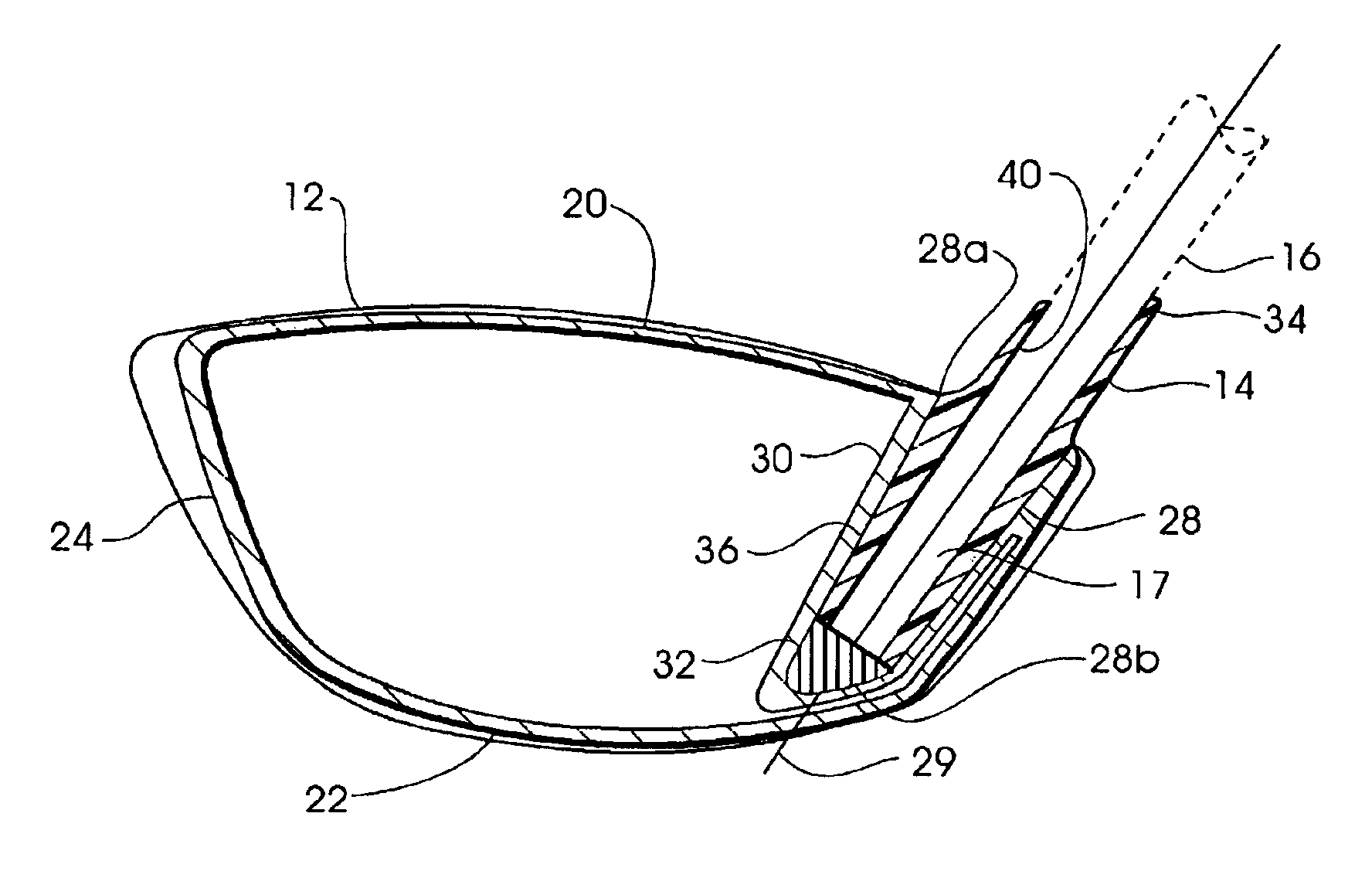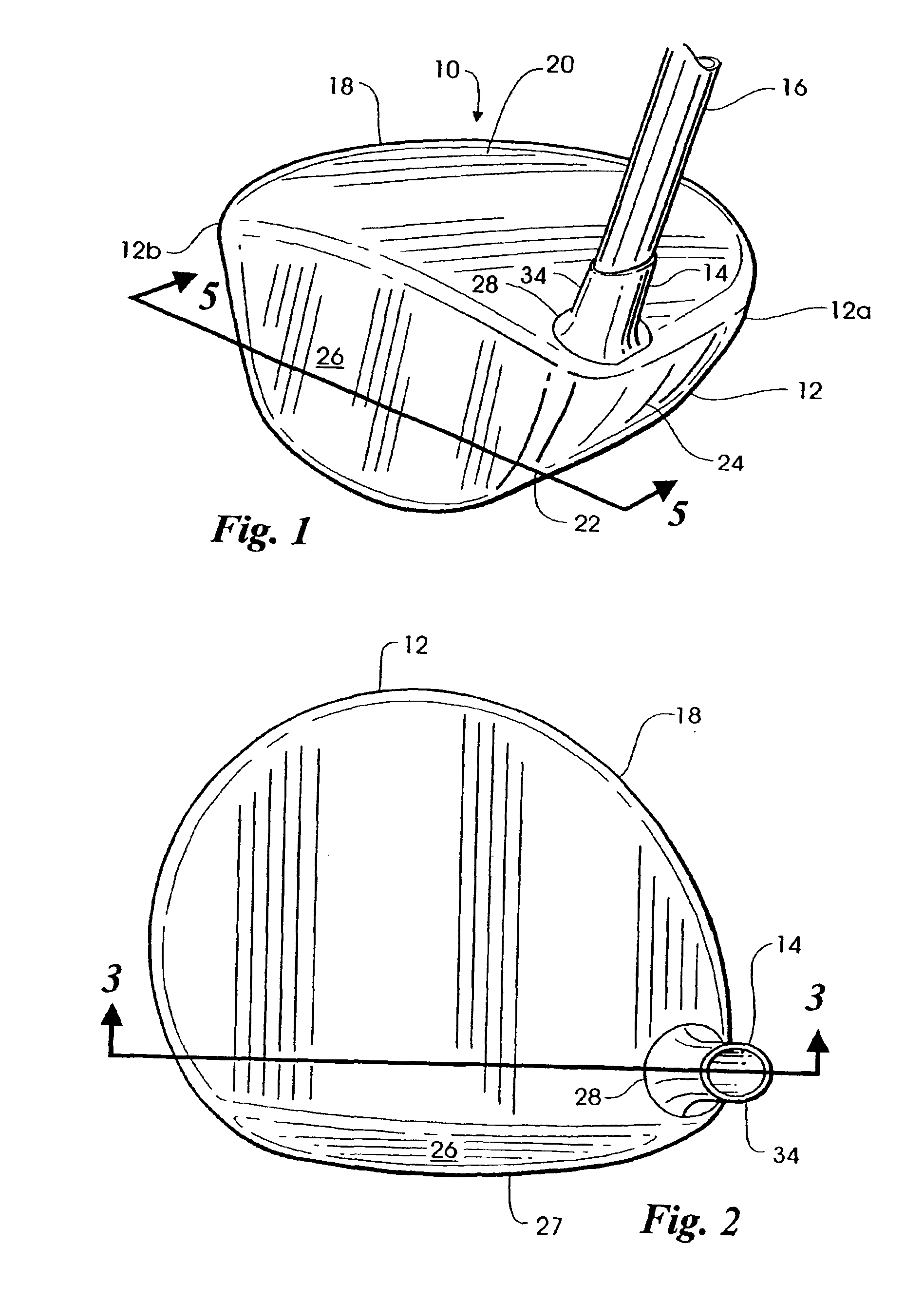Golf club with hosel cavity weight
a golf club and cavity weight technology, applied in the field of golf clubs, can solve the problems of not being able to adjust the hosel bore once the club head is in the weight pads that are integrally formed or attached inside the cavity of the golf club head, and the hosel bore cannot be fully formed or attached, so as to increase the moment of inertia of the club, increase the resistance of the club to twisting, and maximize the effect of the hos
- Summary
- Abstract
- Description
- Claims
- Application Information
AI Technical Summary
Benefits of technology
Problems solved by technology
Method used
Image
Examples
Embodiment Construction
The drawing figures are intended to illustrate the general manner of construction and are not necessarily to scale. In the detailed description and in the drawing figures, specific illustrative examples are shown and herein described in detail. It should be understood, however, that the drawing figures and the detailed description are not intended to limit the invention to the particular form disclosed, but are merely illustrative and intended to teach one of ordinary skill how to make, and or use the invention claimed herein and for setting forth the best mode for carrying out the invention.
FIG. 1 depicts a golf club 10 comprising a head 12, a hosel 14 and a shaft 16. Head 12 is composed of a hollow body 18 made of a first material such as titanium having a high shear modulus of elasticity and a high strength to weight ratio. The hollow body 18 has a top wall 20, a bottom wall 22, and a side wall 24 connecting the top wall 20 to the bottom wall 22. Hollow body 18 has a front wall 2...
PUM
 Login to View More
Login to View More Abstract
Description
Claims
Application Information
 Login to View More
Login to View More - R&D
- Intellectual Property
- Life Sciences
- Materials
- Tech Scout
- Unparalleled Data Quality
- Higher Quality Content
- 60% Fewer Hallucinations
Browse by: Latest US Patents, China's latest patents, Technical Efficacy Thesaurus, Application Domain, Technology Topic, Popular Technical Reports.
© 2025 PatSnap. All rights reserved.Legal|Privacy policy|Modern Slavery Act Transparency Statement|Sitemap|About US| Contact US: help@patsnap.com



